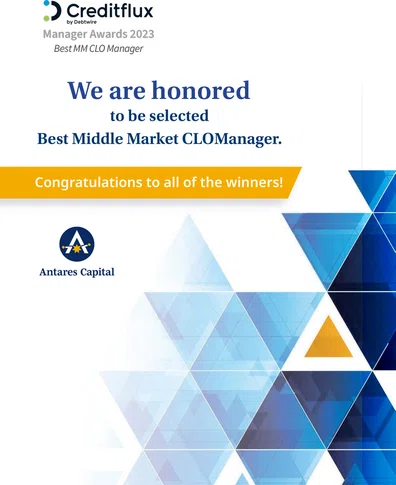

June 2023 | Issue 255
Opinion
CLOs
For the vast majority of managers, CLO AUM is akin to a melting ice cube

Thomas Majewski
Founder & managing partner
Eagle Point Credit Management

CLO managers are being pushed into mergers, but sometimes one plus one equals less than one
The past two years saw some of the largest ever CLO collateral manager acquisitions. We don’t expect this to ultimately lower the number of CLO collateral managers active in the market — each year brings new entrants — but it does create complications for investors in CLOs issued by both the acquired and the acquirer. Business combinations always cause distraction, which may be so meaningful as to impact long-term investment performance.
First though, why do we see some of the largest CLO platforms in the world adding to their AUM via acquisition today? We believe it boils down to (1) the greater advantages of scale in our market now versus historically, and (2) the fact that many CLO collateral managers see their AUM declining as CLOs exit reinvestment periods with the reset market being substantially closed.
It has been difficult for CLO collateral managers to issue CLOs over the past year, absent captive capital, due to the challenged CLO equity arbitrage. Furthermore, many CLO debt investors have focused their investing towards larger platforms in the hopes of being in safer hands and owning securities with greater liquidity. Today, with many CLO investors perceiving bigger as better, many small CLO collateral managers have at least considered a sale or other strategic initiatives.
CLO collateral managers are also seeing larger proportions of their AUM heading outside of the reinvestment period, which will start lowering their fee revenue. In years gone by, resets helped preserve fee streams. Some might have even called CLOs “permanent capital vehicles”. But resets are simply not viable at present for most. Indeed, for the vast majority of CLO collateral managers, their CLO AUM is akin to a melting ice cube. Attaching to a larger platform provides the hope of a path for continued growth.
AUM can grow too big to handle
However, bigger isn’t always better. Investors should be aware the AUM accumulated through acquisition, versus organic growth, is not always a positive for CLO investment performance. Post-merger platforms typically face problems brought about by dis-economies of scale. These incremental risks to CLO investors come in two categories — the potential for damage inside their CLOs and reduced liquidity of their CLO securities.
Integrating a team and portfolios in an acquisition is a lengthy process. According to sell-side research, the overlap between acquired and acquirers’ portfolios can take more than 18 months to arrive at 90%-plus overlap. During this period, CLO collateral managers typically try to trim acquired portfolios to match those they currently manage, selling names they don’t know, often at the expense of par and spread losses. Investors need be wary of any such losses taken in the name of rebranding.
Investors should also be focused on the potential for ‘style drift’ in newly combined CLO collateral managers. This can occur for any number of reasons, from changes in personnel to simply not having the necessary investment processes in place to digest the immense amount of new credits acquired. In any merger of two investment managers, beyond the risk of distraction, investors can’t be sure the combined platform will provide the same returns they have in the past, nor can they know whether those returns will be generated in the same fashion.
Managers take a hit if investors pull back
In a market where bid depth is fairly limited, investors may choose to pause investing with the post-merger CLO collateral manager due to higher than desired exposure to the combined platform. Investors may also put a platform on hold as they watch the combination unfold. Both are reasonable positions — but both hurt liquidity.
CLOs are living, breathing things that, just like a private equity investment, require constant oversight and monitoring from their owners and lenders. Though some mergers do work out well over time, the road will have some bumps along the way. CLO investors would be wise to watch closely in case the good event for a CLO collateral manager’s bottom line turns out to be a bad one for the investors.
All of this begs a question: why does the CLO market allow consent to changes of control at CLO collateral managers to sit with nominee directors sitting on the beach in the Caymans, instead of with the owners holding the residual economics?
Share this article:
Global credit funds & CLO's
June 2023 | Issue 255
Published in London & New York.
Copyright Creditflux. All rights reserved. Check our Privacy Policy and our Terms of Use.



















